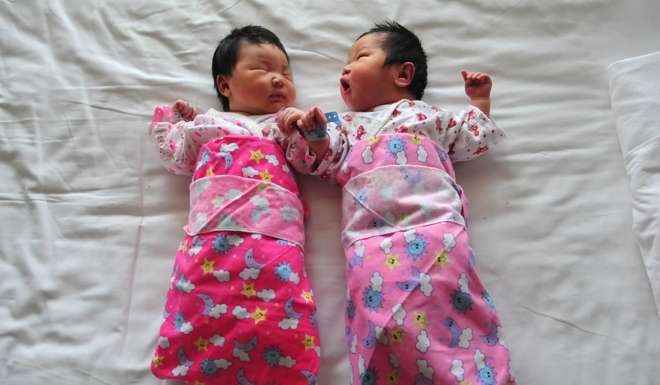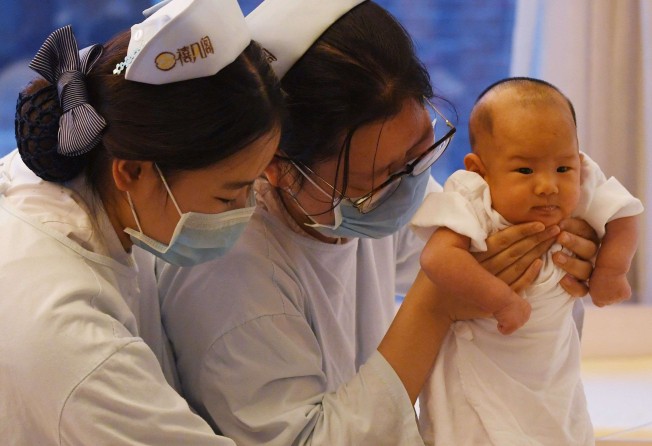
China sees 1.3 million more new babies in 2016 ... but workforce shrinks as population ages
Increase to 17.86 million newborns last year much smaller than government expected despite new two-child policy, with ‘chronic’ fall in births predicted from 2018

New births in China in 2016 rose by 1.31 million after Beijing introduced a new two-child policy for couples, new data showed.
However, the increase was less than the government had expected, and a population and birth analyst has warned that a “chronic” drop in the number of newborn babies from 2018 would last “many many years”.
The data released on Friday by the National Bureau of Statistics also showed the country’s workforce shrank by 3.49 million while the number of people aged 60 or above also increased by 10.86 million.
The overall number of new births in 2016 totalled 17.86 million – the biggest annual total on the mainland since 1993 – partly thanks to the relaxation of the control on births.
But the world’s most populous country’s demographic situation is still dominated by a low fertility ratio, shrinking labour force and a quickly ageing population.

The rise in new births in 2016 proved much smaller than the government had expected.
China’s family planning agency had previously estimated that allowing every Chinese couple to have two babies could push annual new births up to 20 million.
Huang Wenzheng, co-founder of Cnpop.org, a non-profit organisation analysing China’s population and birth policies, said the increase in births was smaller than his previous estimates of “three to five million”.
The number of new births in China might continue to rise in 2017 before a “chronic” fall started in 2018, Huang warned, adding that the fall would last for “many, many years” and no one could predict when it would end.
It is no surprise that China’s labour force has shrunk. We should stop pinning high hopes on the idea that scrapping the one-child policy would have a big impact
Statistics also showed that China had 230.86 million people aged 60 or over at the end of 2016 – up from 222 million a year earlier. The number of Chinese pensioners is larger than the combined populations of Germany, France and Britain.
To make things worse, China’s labour force – those people aged 16 to 59 – continued to shrink for the fifth year in a row in 2016.
The size of the workforce dropped to 907.47 million at the end of 2016 – down from 910.96 million at the end of 2015.
“It is no surprise that China’s labour force has shrunk,” Ren Yuan, a demographics professor at Fudan University in Shanghai, said.
“We should stop pinning high hopes on the idea that scrapping the one-child policy would have a big impact and change the population structure. The greying society is an unstoppable trend.”
Beijing started to amend its three-decade-old one-child policy in 2013 after China’s President Xi Jinping came into power – ending one of the biggest demographic experiments in human history.
The country began to allow couples to have two children as long as one person out of the couple was an only child, but this relaxation of the rules had only a limited effect.
In 2014 – one year after the rule was eased to allow couples where one of them was an only child to have two children – 16.87 million babies were born, 470,000 more than in 2013.
The realistic number is maybe that we have 12 million new births each year
In 2015, China recorded 16.55 million new births, a fall of 320,000 compared with 2014.
As a result, from January 1, 2016, China allowed all couples to have a second child.
Yi Fuxian, a strong critic of China’s family planning policy and the author of Big Country With an Empty Nest, said the new birth data released by the statistics agency could be overstated.
Yi, now a scientist at the University of Wisconsin-Madison in the US, said that according to his own calculations the real number of new births in China might be “at most 13 million”.
This view was supported by Huang.
“I think there is a difference of about 5 million people, [which means] that we have over counted,” Huang. “The realistic number is maybe that we have 12 million new births each year.”